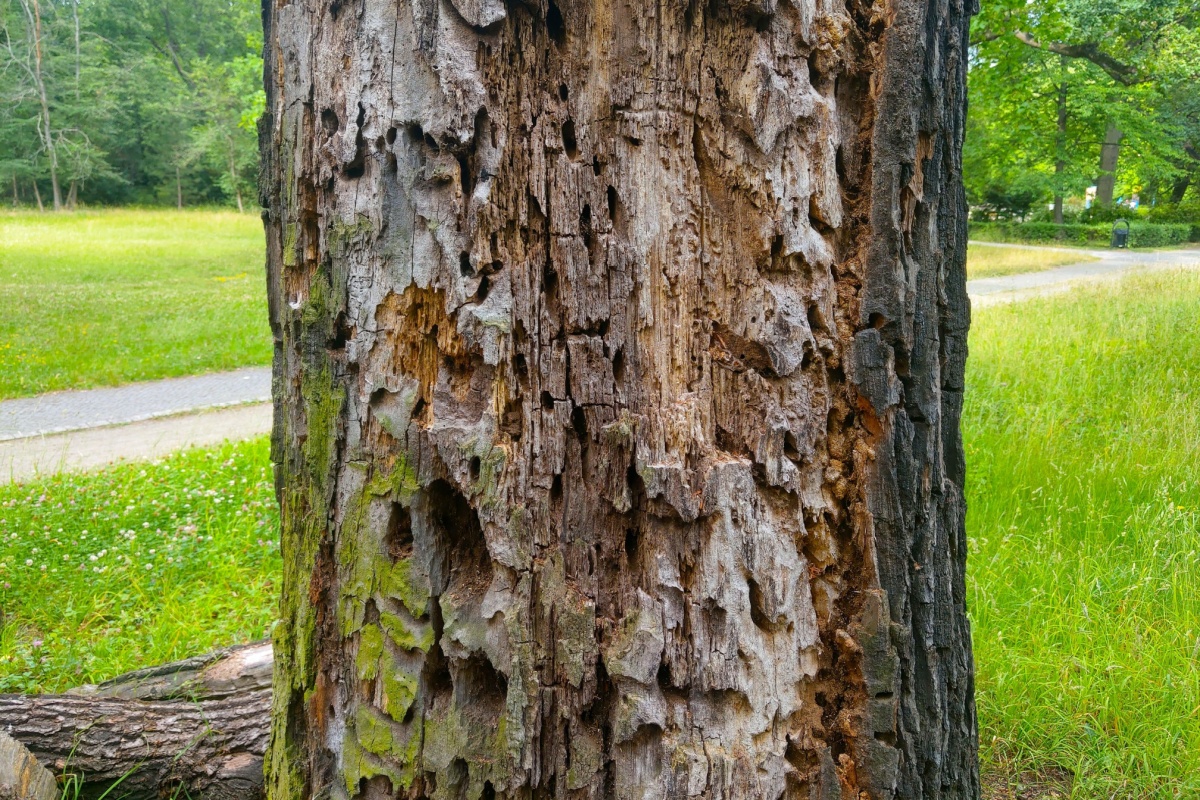
When your tree’s leaves begin to turn brown even though it’s spring, or when its bark starts to fall off in great chunks, you know something is wrong, but you’re unsure if there’s anything you can do to save it. While these problems are quite alarming, they are often just the first signs that your tree is in trouble. The good news is that you can seek professional help to restore their appearance and health.
If any of the following symptoms of a dying tree sound familiar, don’t hesitate to call Lawn Specialties for expert tree care services in Hazleton, PA, and the surrounding areas. Our professionals can provide an accurate diagnosis and develop a treatment plan to help your sick or dying tree recover.
Leaf Problems
If your tree is dying, you will often see tell-tale signs of problems by looking at the leaves. While it’s normal for trees to shed leaves in the fall, they shouldn’t have leaves that are turning brown, yellowing, or falling prematurely in spring or summer. Make sure you seek professional help right away if you notice any of these signs of a dying tree:
- Premature Color Changes: If leaves are changing color and falling off during the growing season, it could be a sign that your tree isn’t getting enough nutrients or water. Discoloration can also be a symptom of various tree diseases or pest infestations.
- Wilting or Drooping Leaves: When leaves begin to wilt or become dry and brittle, there may be root damage or insufficient water uptake. If the problem persists, the tree can die completely.
- Sparse Foliage: When entire sections of a tree fail to sprout new leaves during the growing season, it may be struggling with root damage or other serious issues. Dead or broken branches can also pose a safety risk, as they may fall unexpectedly.
- Leaf Scorch: Brown, crispy edges on leaves often indicate drought stress or root problems.
Tree Bark Issues
The bark of a tree plays an essential role in protecting it from external threats like pests and diseases. When a tree’s bark starts to show signs of damage or deterioration, it’s often a symptom that something deeper is wrong.
- Peeling Bark: Bark falling off the tree trunk in large chunks is one of the more obvious symptoms of a dead or dying tree. It can indicate disease or structural imbalance in the tree.
- Vertical Cracks: Large vertical cracks in the bark can expose the inner layers of the tree to infections and pests. These cracks can also weaken the tree’s structure, making it more susceptible to breaking during storms or strong winds.
- Cankers: These are open wounds on the tree’s bark that don’t heal properly, often caused by fungal or bacterial infections.
- Rotten Wood: Mushrooms growing at the base of your tree or on its trunk are signs of internal rot. This rot can spread throughout the tree, causing it to weaken and eventually die.
To check the health of your tree’s bark, you can perform a quick “scratch test.” Use a pocket knife to gently scratch a small area on a branch. If you see green underneath, that part of the tree is still alive. If it’s brown and dry, you just may have a dead tree on your hands.
Soil and Root Problems
Healthy trees rely on strong root systems and nutrient-rich soil to thrive. When a tree’s roots or the surrounding soil are compromised, it can lead to the following symptoms of a dying tree:
- Exposed Roots: Construction projects, erosion, or improper landscaping can leave a tree’s roots exposed. When roots are damaged or no longer properly buried in the soil, the tree loses access to water and nutrients, leading to general weakness and dying branches.
- Root Rot: Root damage often goes unnoticed because it occurs underground, but overwatering or poor drainage can cause root rot, which slowly kills the tree. If the tree starts leaning, that’s a clear sign of root system failure, which can result in the tree eventually falling.
- Compacted Soil: If the soil around your tree is very hard or compacted, it can prevent essential nutrients and water from reaching the tree’s roots.
- Heaving Soil: If the soil around the base of the tree appears raised or disturbed, it could be a sign of root problems or a leaning tree that is about to fall.
What to Do With a Dying Tree
Do you have a dying tree on your property? It’s important to take immediate action. Delaying care can result in the tree’s decline, turning a sick tree into a dead one that poses a safety risk. Make sure you enlist the help of a qualified professional as soon as you have suspicions about the health of your trees. Tree experts can help you grow healthy trees with timely pest control solutions and targeted treatments for common tree diseases.
Contact Lawn Specialties for Help With a Sick Tree
When it comes to preserving the health and beauty of your trees, early detection of symptoms is key. If you’ve noticed any signs of a dying tree, such as peeling bark, dead branches, or unusual changes in the soil, contact Lawn Specialties. We provide residential and commercial tree care services that address everything from pest infestations to fungal diseases. With over 35 years of experience, our experts know how to provide accurate diagnoses and ensure your trees remain strong and healthy for years to come.

